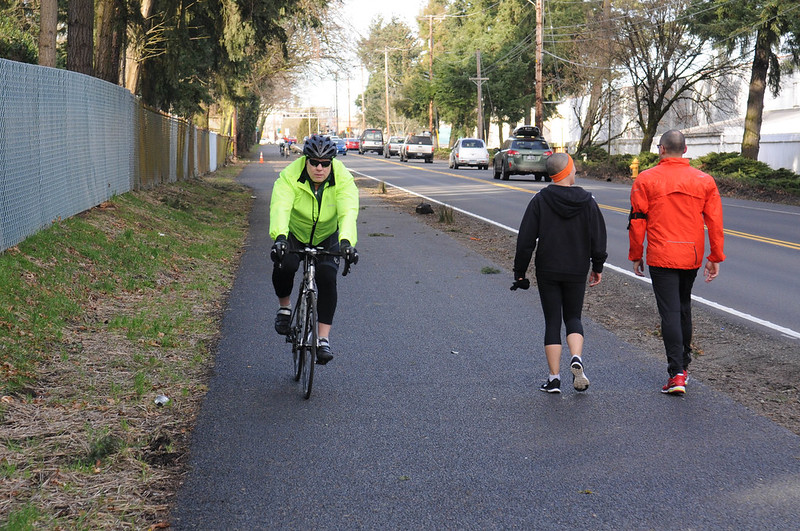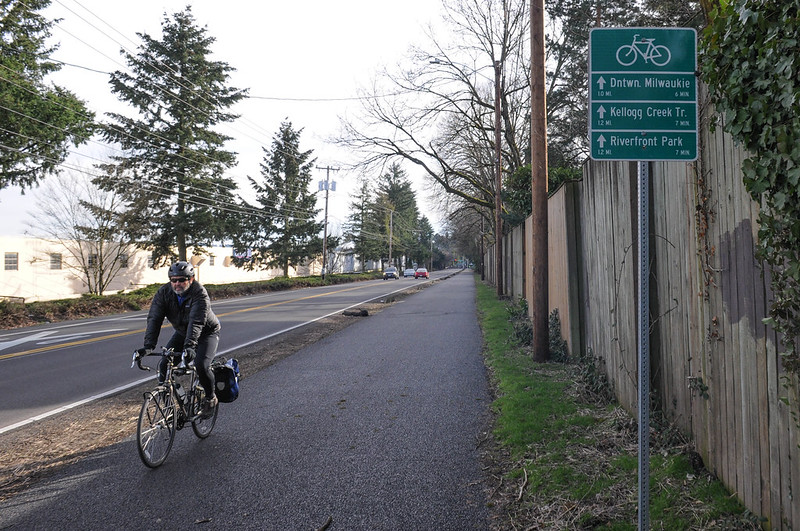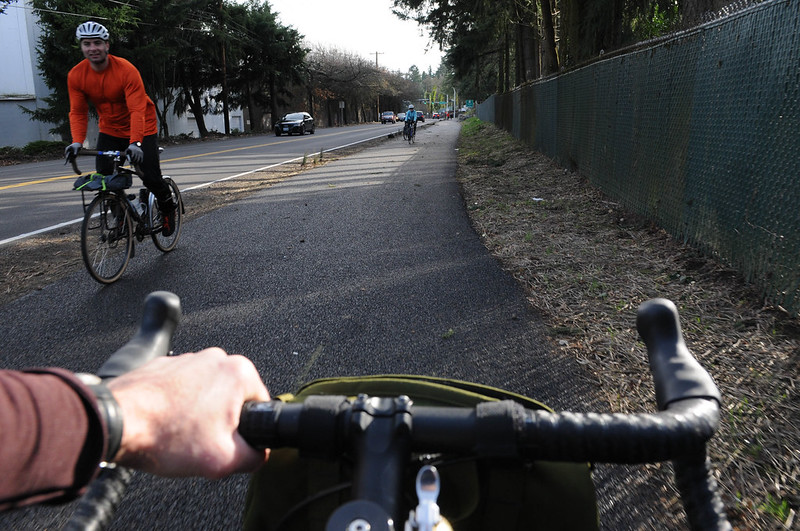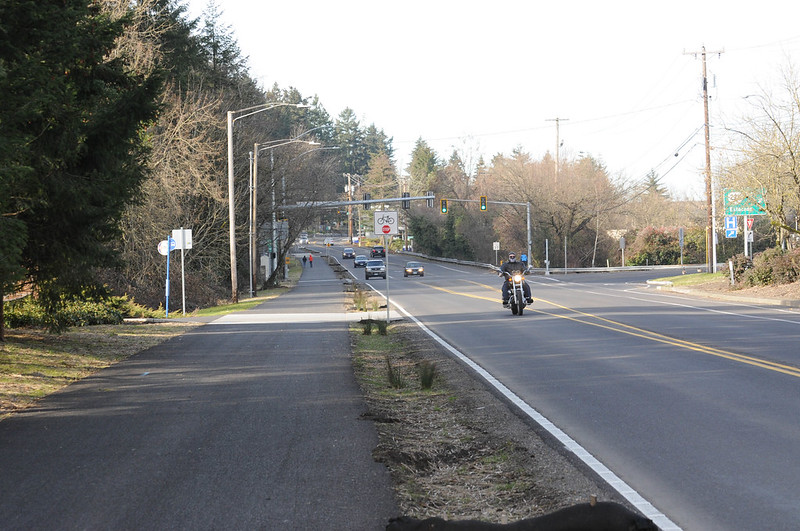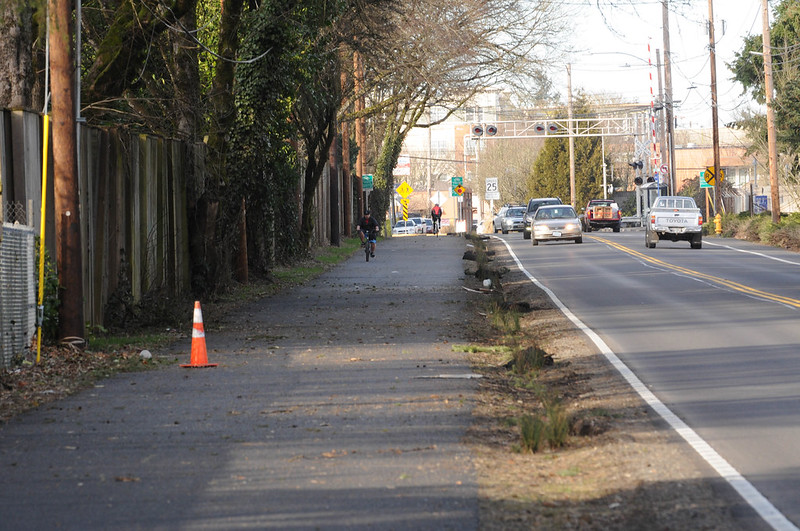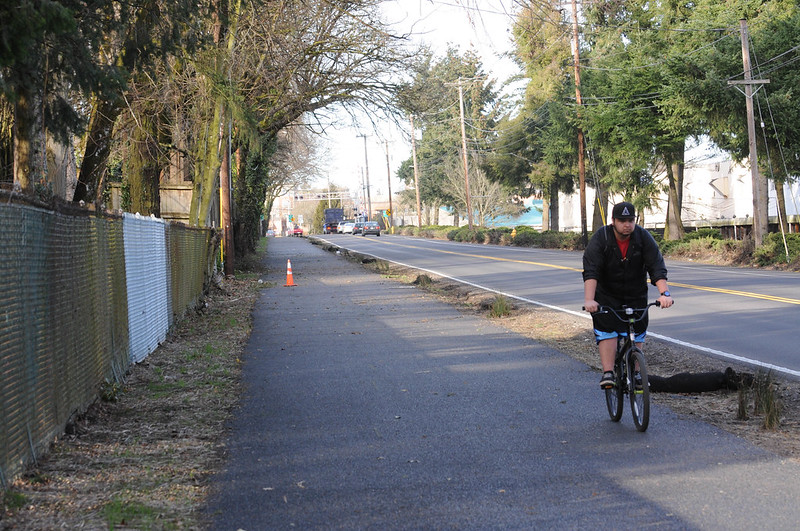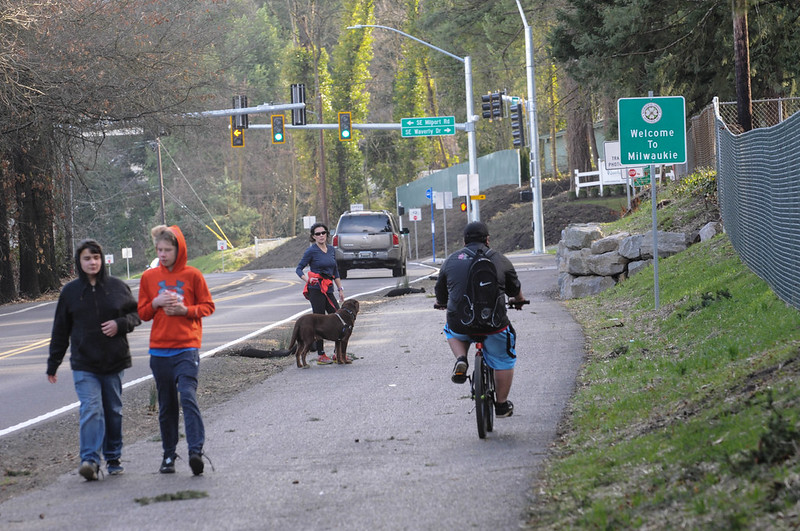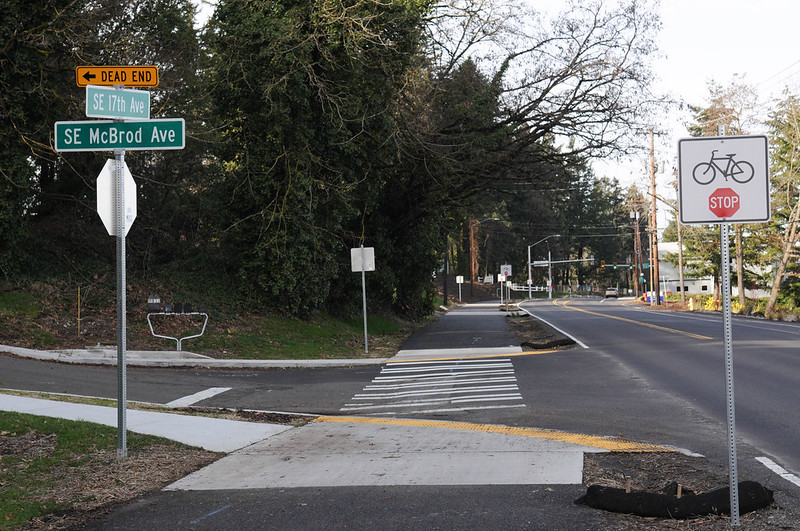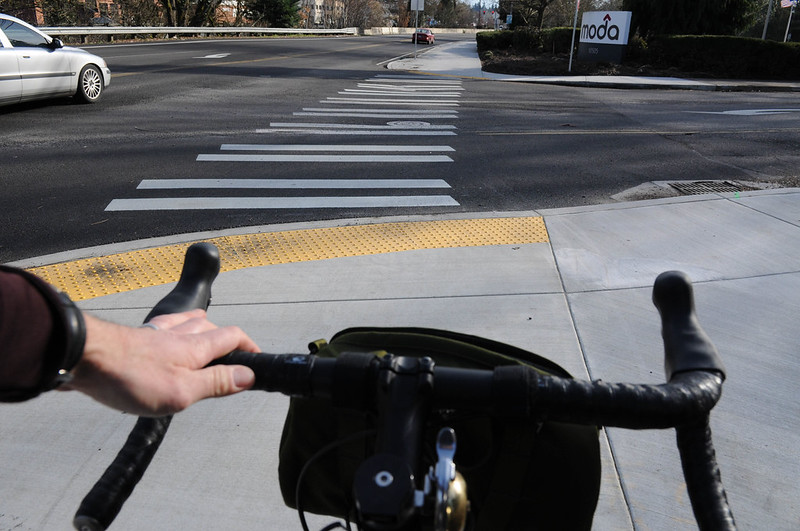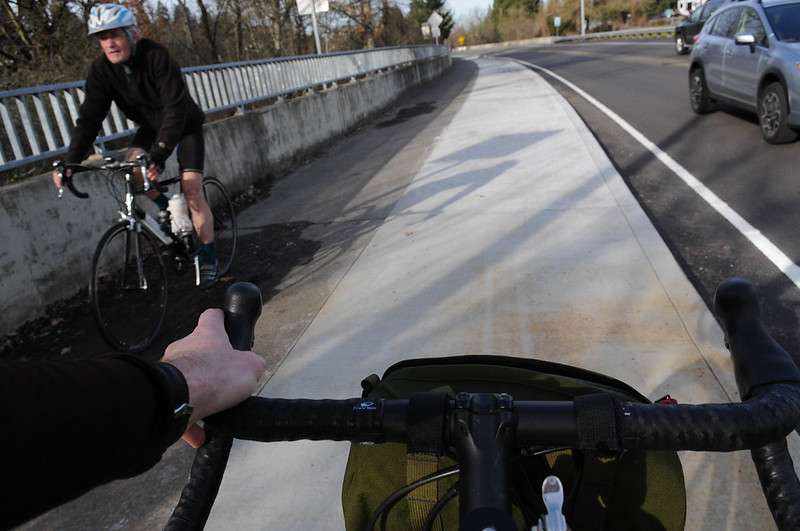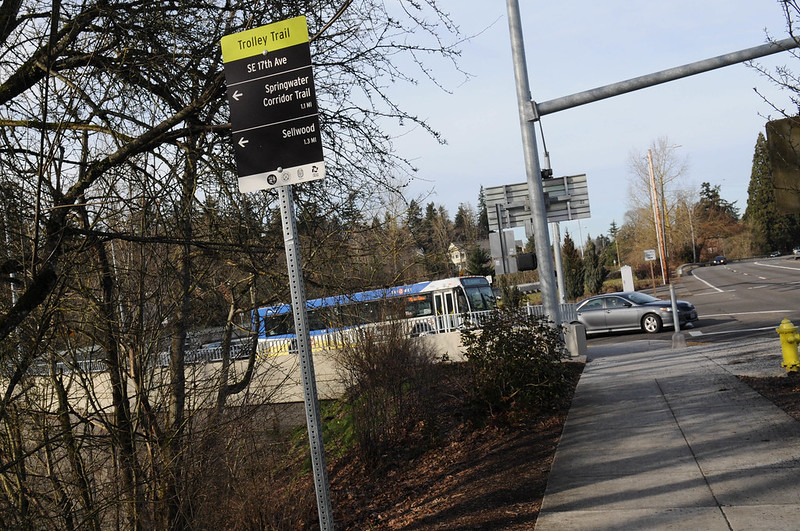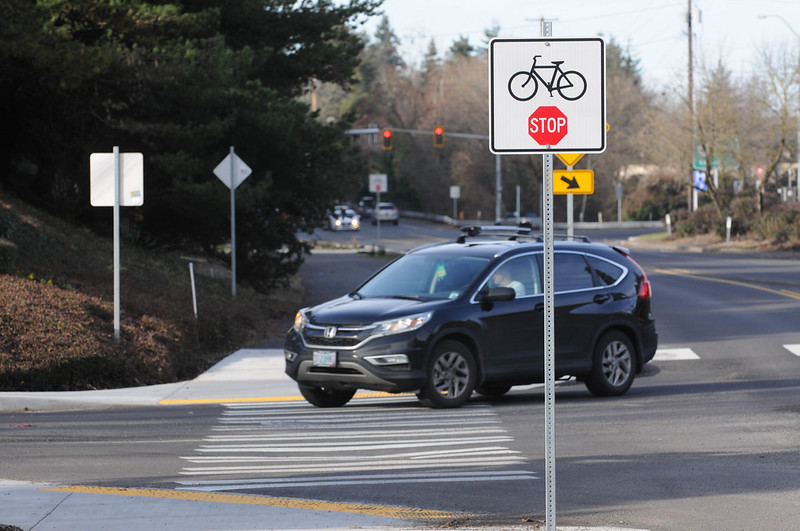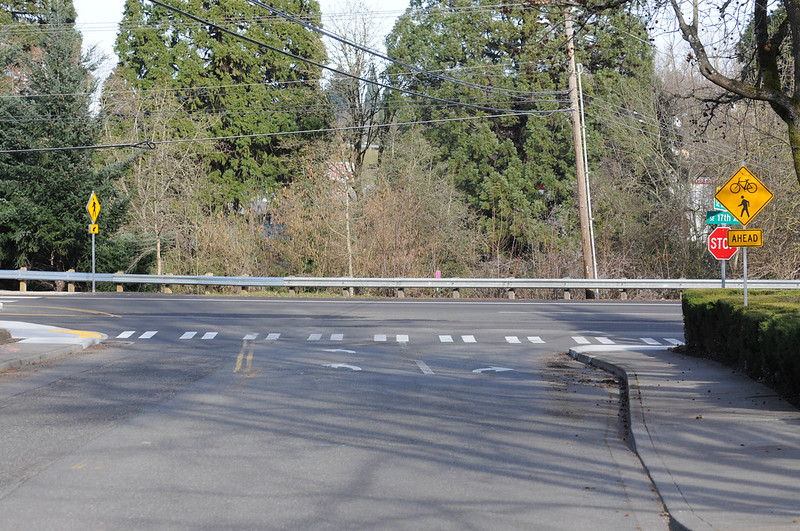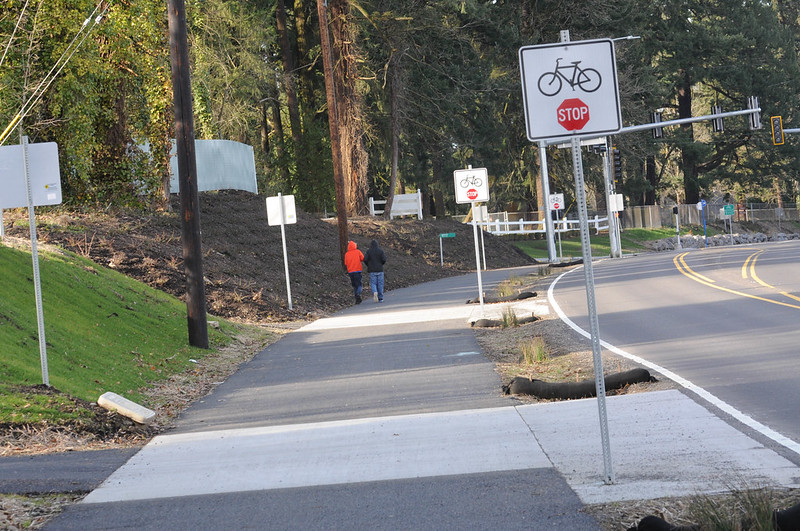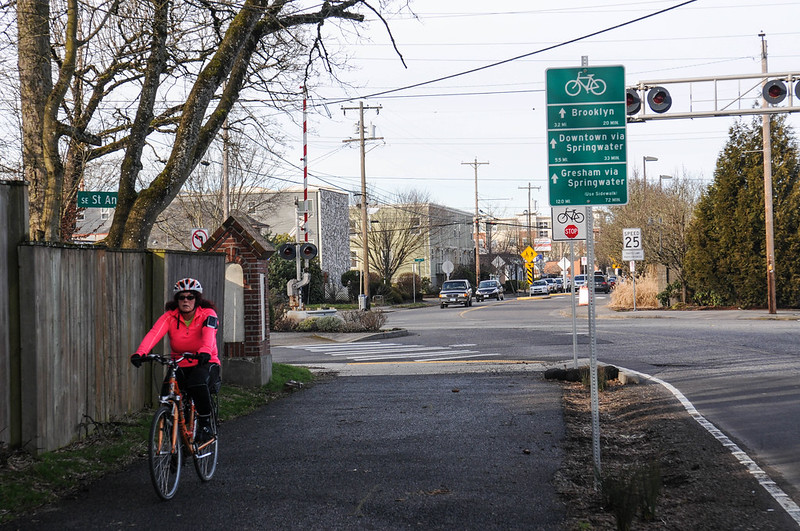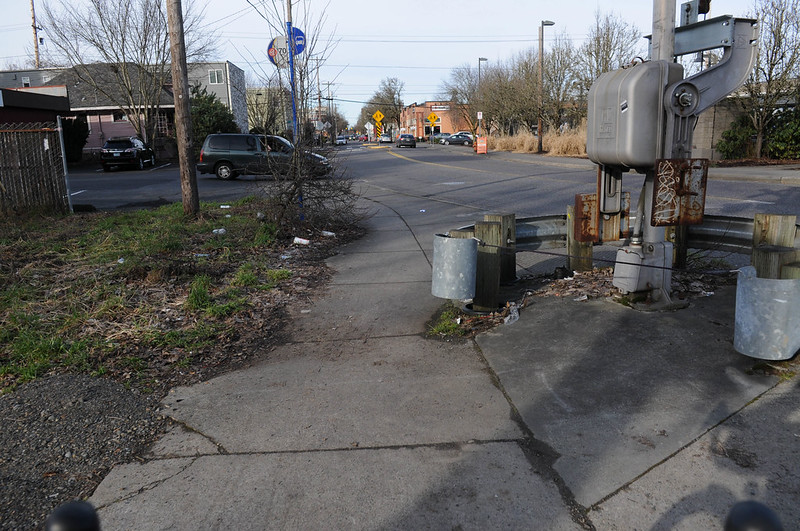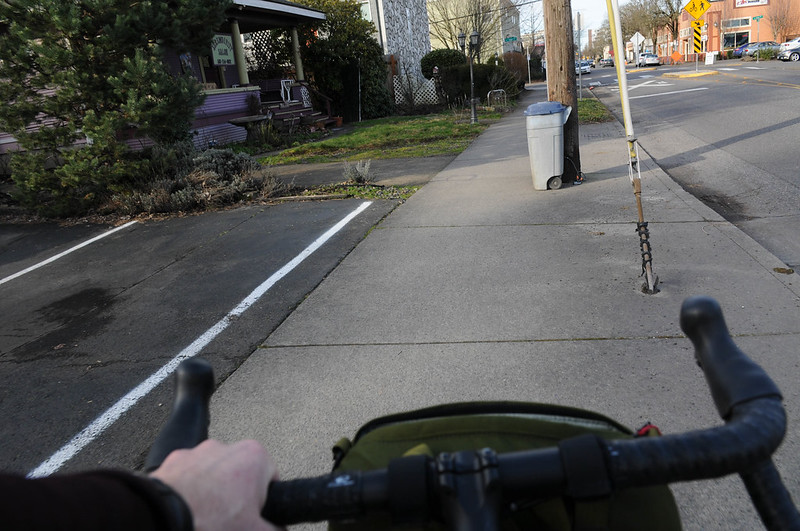A new path now connects Sellwood to Milwaukie, making the one-mile distance between them feel much shorter.
“I’d give it a B-.”
— Matt Menely, Milwaukie bike advocate
The path opened around the start of the year but the big snowstorm put a damper on its coming-out party (unless you know how to cross-country ski). With warmer and drier temps I finally made a point to get over and check it out myself.
Just to refresh your memory, the $3.3 million project added a 12-foot multi-use path on the west side of SE 17th between SE Ochoco (in Portland) to the intersection with Highway 99E (in Milwaukie). As we reported in 2014 the project was funded through Metro’s Regional Flexible Funds program in 2011.
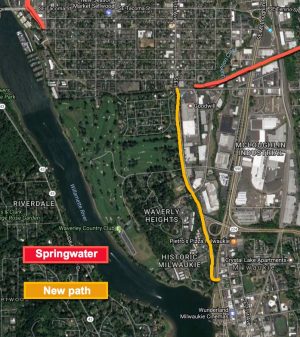
It was a good investment. The path is a vast improvement over what used to be a narrow bike lane that was often littered with debris and/or partially blocked by vegetation. This stretch of road between two cities is very sparsely populated with only a few homes and businesses. As such it always felt like sort of like a no-mans-land — one of those places where, as a bicycle user, your heart rate would jump a bit and you could never quite relax (or stop looking over your shoulder) until you go through it. Now you have a place to ride in comfort. The path also makes the paths at each end exponentially more value. I believe when it comes to significant new bicycle infrastructure, the sum is much greater than the individual parts. This path makes the existing Springwater Corridor (in the north) and Trolley Trail (in the south) much more valuable. The path also connects Milwaukie to Sellwood in both a physical and mental sense in an exciting new way. Much like a new transit line can effectively shorten the distance between two places, this path makes it possible for someone in Sellwood to hop on their bike and visit destinations in Milwaukie — and vice versa.
While the path is a huge step forward, it also misses a few key notes. Like far too many of our regional paths, it’s good — but not great.
In addition to what I’ve mentioned above, the path is nice and wide. I saw people walking two abreast while a bicycle rider passed in the opposite direction and there was plenty of room for everyone. It was also nice to see new, bike-specific navigational signage to encourage people find their way to more places and explore a bit further.
Advertisement
But here’s why the path doesn’t reach its full potential: it has stop signs for path users at small, private driveways; it lacks physical separation from auto traffic and it lacks safe and intuitive connections to the Springwater Corridor path and downtown Milwaukie.
Milwaukie bike advocate Matt Menely said he’d give it a grade of “B-“. I asked Menely and other members of the Bike Milwaukie group (via Facebook) what they thought of the new path. Menely said his biggest concern is the lack of separation from people driving cars 35-40 mph on SE 17th — especially at the T-intersection with Highway 224. I was surprised too. $3.3 million for a one-mile path and the only separation that exists is an unplanted dirt strip that’s just three-to-four feet wide. Menely said residents suggested jersey barriers at the 224 intersection. He’s hoping the scant vegetation fills in and/or that bollards get installed at key locations.
Other Bike Milwaukie members were excited for the path, but also laments. Cris Waller said, “The lack of a direct connection to Springwater is bad – and there’s no sign when/if that will happen. Crossing at Ochoco is dangerous.” (The City of Portland is aware of the lack of connection between this path and the Springwater. They requested funding to close the gap last fall but it was not granted.)
Ben Rousseau said, “This is a major improvement” and “Overall, I’m really glad it’s there.” But he shared similar concerns about a lack of separation from auto users and poor connections to downtown Milwaukie.
Another big issue with this path is that it comes with 4-5 new stop signs for path users that are placed on private driveways. Instead of requiring private homeowners to stop for a public path — or simply allowing all users to yield to the presence of others — these signs put the onus of stopping on path users. This is unfortunately a common practice on regional paths.
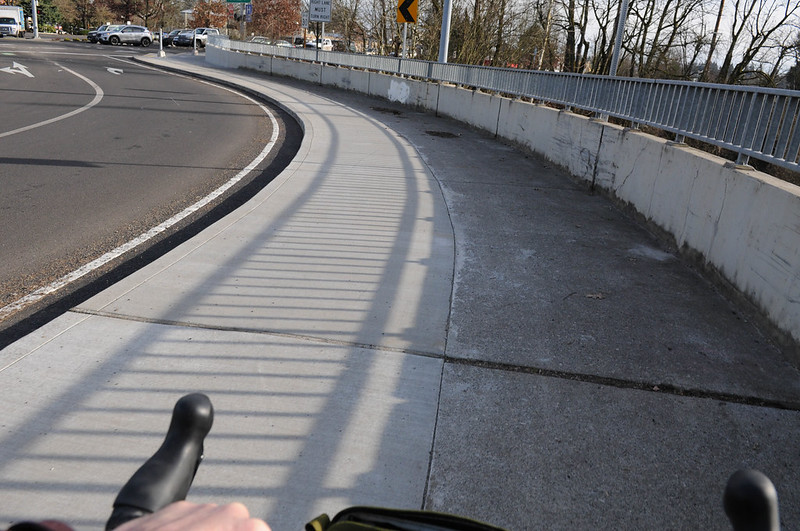
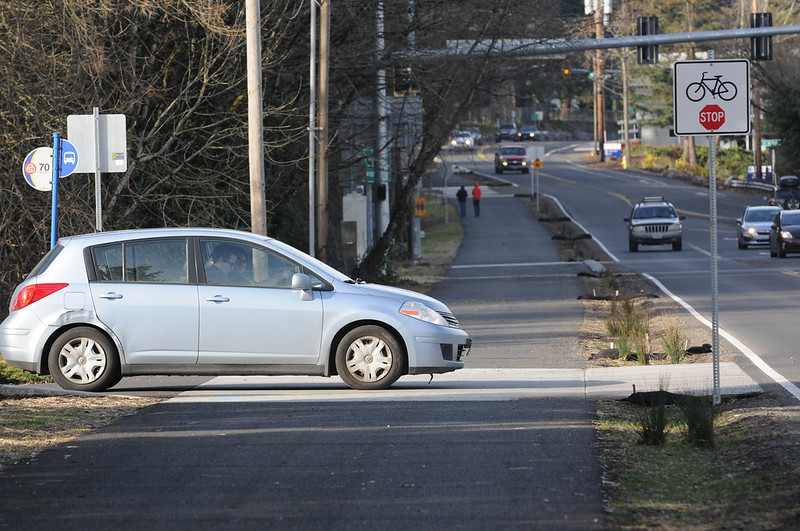
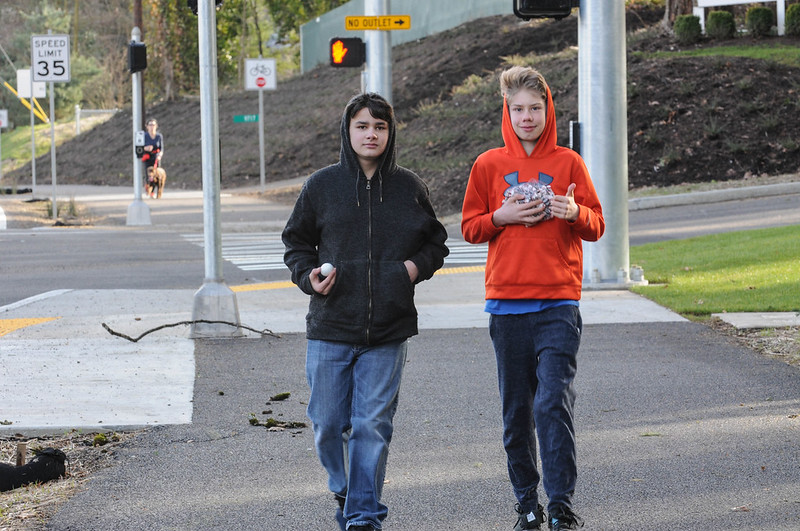
While I was out there on Sunday I ran into two young boys walking from Milwaukie to Sellwood. 13-year-old Noah said he lives a few blocks away from the path and he’s thrilled that it’s finally open. “My sister goes to Portland Waldorf School and it’s encouraged her and our family to bike more,” he said. “We used to not bike this way at all because there wasn’t a path here and the bike lane didn’t feel safe.”
Have you ridden this? What do you think so far?
— Jonathan Maus: (503) 706-8804, @jonathan_maus on Twitter and jonathan@bikeportland.org
BikePortland is supported by the community (that means you!). Please become a subscriber or make a donation today.


